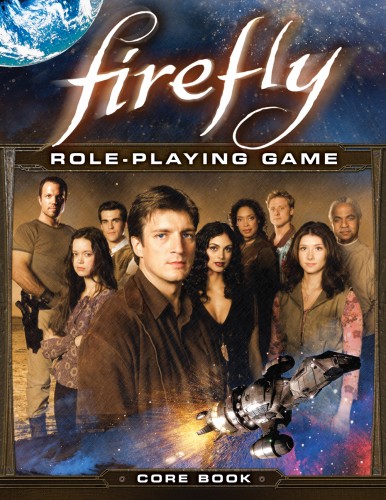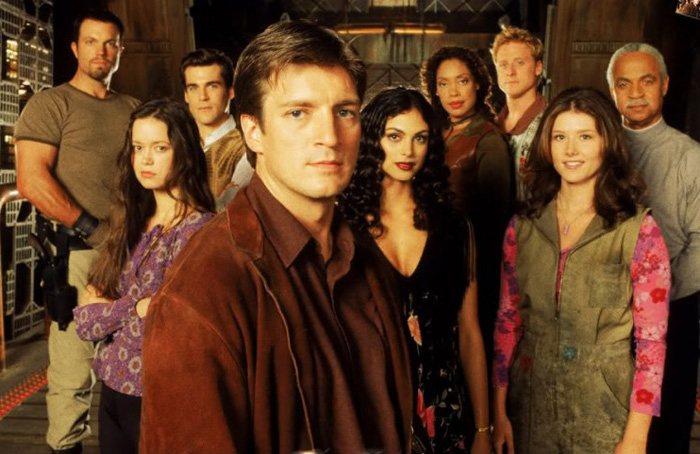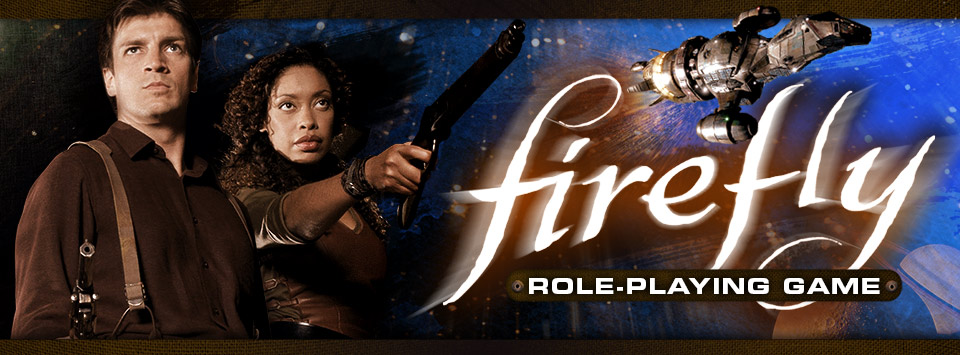The Hardback rulebook is yet to be released for this game, so I am reviewing the early PDF release that was sold to everyone that ordered the GenCon preview.
Let me throw this out there to start with. I love Firefly. 14 Episodes of Firefly delivered more than some shows can in 6 seasons. I don’t know if it was this love for the show which built my hopes up or something else, but I had unreasonably high expectations for this game considering it was coming from the same company that brought us the wildly unbalanced Serenity Roleplay game back in 2005. That game couldn’t use anything from the TV show due to licensing issues, so it was very focused in the Serenity timeline which didn’t do it any favours. Margaret Weiss Productions now has full reign over the television material for Firefly, and a fully formed system in their Cortex Plus ruleset. Shiny!

Out in the Black…
This is a good looking rulebook. I’m only looking at a PDF, but the formatting is great and the language and colours used are spot on to the Firefly universe. The book comes in at 367 pages which includes around 30 pre-generated characters including the Serenity crew, as well as two dozen pre-generated ships. The book also includes a map of Serenity (or any other 03-K64 Firefly vessel) and five system maps which are bland compared to the design of everything else.
Layout wise, the book is a mess. After the Contents and obligatory ‘What is a Roleplay Game’ section, there is 124 pages of episode guides from the TV series. These tell you all you need to know to recreate those heroic moments from the TV show (I have no idea who would want to do this) but to this point there has been no explanation on how the actual system works. You are then presented with character creations rules, ship creation rules, and then on page 260 you are finally presented with how to play the game. This just feels all manner of wrong for a core rulebook. If you are picking up this book, it’s a fair bet that you are a fan of the series so putting the episode breakdowns first just feels silly. Especially when there is a section towards the end of the book on how to structure your adventures.
The characters have three attributes: Mental, Physical, and Social and skills from d4 (untrained) to d12. You put together a dice pool of applicable attributes, distinctions and skills, plus other dice with use of distinctions and plot points, etc. The mechanic is a player dice pool vs a GM dice pool which is rolled against the same difficulty. It’s easy enough to grasp, but plot points add the wrinkle. Plot Points are gained when you set off a character trigger(play your character well) and you can spend these to negate/explain away situations by creating ‘Assets’ which, depending on how many points you have, add an extra dice to your roll (the book gives you examples on how to spend these points before telling you what they actually are). These assets are either throw away ‘Episodic’ assets or a ‘Signature asset’ which will carry on throughout the series. The GM also has plot points to create ‘Complications’, which are things to get in your way. Tracking all of these spends is laborious and, to be honest, totally unnecessary. Other games handle these types of things a lot better (GUMSHOE and their preparedness for example) and it just gets in the way.
Other than the amount of moving parts that these assets and complications can create, the system isn’t all that hard to pick up and run with, and this can easily be home brewed away.
To help you role-play, there is Chinese phrase translators galore spread throughout the book, as well as a brilliant ‘Talkin’ Like Kaylee’ section so your Engineer character can communicate what’s wrong with your boat. I like this bit so much I have stolen it for some of my other Sci-fi games.

Here’s how it is…
I wanted to love the book and I wanted to love the system, but I don’t. The book looks great, but it’s a pain to navigate. Having to go back and forth to the contents page would be tiresome with the hard back version. It’s not ideal with a PDF either. The system is solid with a few nagging narrative devices that must have sounded shiny when putting the book together but just don’t play very well.
Having bought the PDF for £15, I don’t see myself buying the Hardback anytime soon, and I think that I would only recommend doing so if you know you will be playing it for a good long while. If not, I think the PDF version is worth the money.



